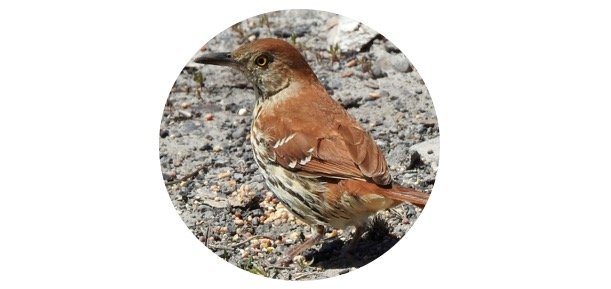Texas State Bird: Description, Pictures, & Fun Facts
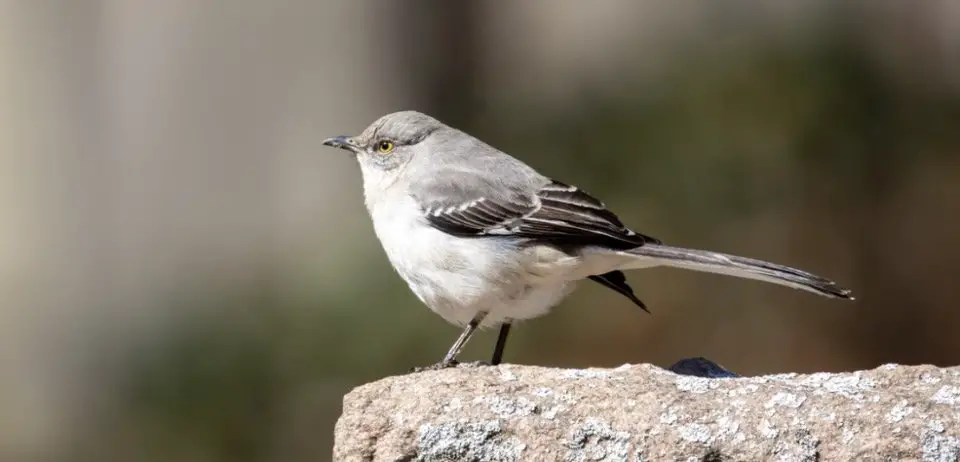
What is Texas State Bird?
Each state in the United States has its own bird, and each bird has a narrative about how it got the state bird emblem. Texas is the second-largest state in the United States in terms of land and population, and its animal icons include the longhorn, armadillo, and Mexican free-tailed bat, but what is the official bird of Texas?
The Northern mockingbird (Mimus polyglottos) was named the state bird of Texas in 1927. The medium-sized bird with long legs and a tail expressed affection for the state of Texas, and the state reciprocated.
Continue reading to learn why and when the Northern Mockingbird was designated as the official bird of Texas.
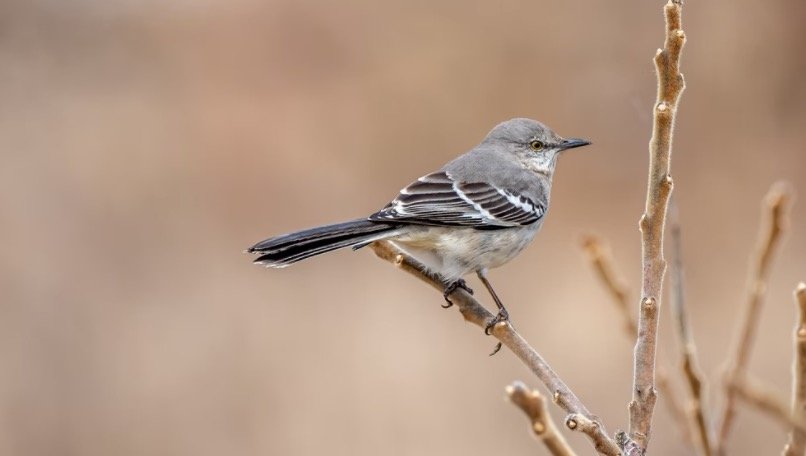
Why is Northern Mockingbirds Texas State Bird?
Texas honoured its state bird’s commitment because it stayed constant over the state’s brutally hot summers and bitterly frigid winters. The Northern Mockingbird did not move south during the winter, and it still does not know.
It spends the whole year in Texas. According to Senate Concurrent Resolution No. 8, 40th Legislature, the act proclaiming it the state bird, the bird defends its territory “like any genuine Texan.”
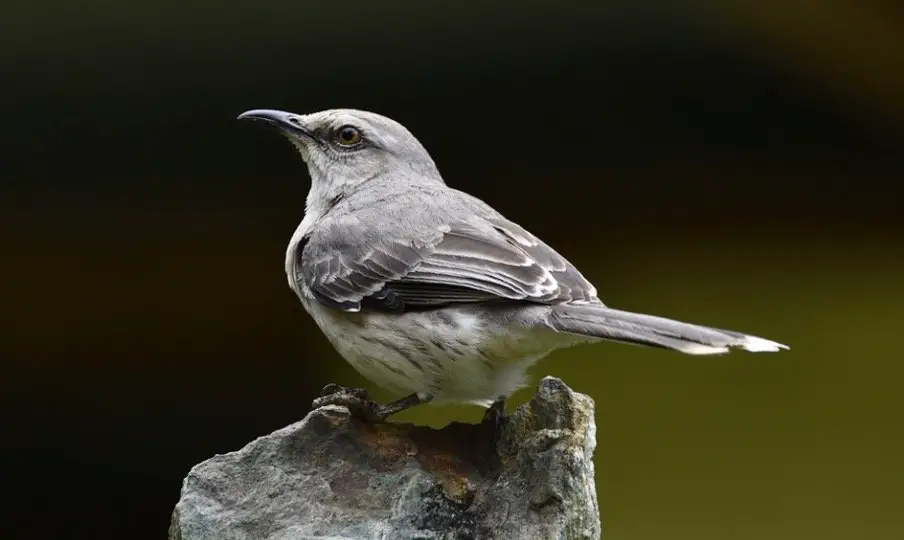
When did Northern Mockingbirds become Texas State Bird?
The bird was seen in the state’s open lands, which the species enjoys. Texas, the second-largest state in the United States by land and population, became a state on December 29, 1845, but did not define state emblems until the following year.
Arkansas, Florida, Mississippi, and Tennessee all have the northern mockingbird as their state bird. The law making it official was passed in 1927, although respect for the bird had been growing in the state for a long time before that.
Richard Milburn wrote the song “Listen to the Mockingbird” in 1855. Lobbying for the bird’s designation as the state bird started in 1920. The Texas Federation of Women’s Clubs spearheaded the campaign, recommending the Northern mockingbird to the Texas State Legislature.
The ladies saw that the bird battled to preserve its home, and its ferocity compared it to human Texans. On January 31, 1927, Governor Dan Moody signed legislation designating the mockingbird as the state bird. This made Texas the first state to have a state bird named after it.
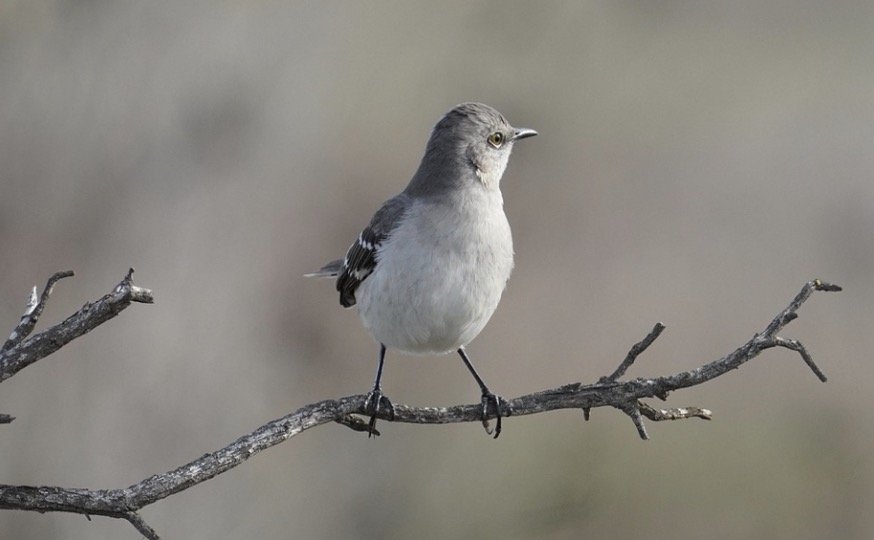
What does Texas State Bird look like?
Males of the northern mockingbird grow somewhat bigger than females. Otherwise, the two sexes of the bird are physically similar. The bird’s breast and upper body are grey, while its stomach is white or light grey.
These birds often have a black beak with a brown hue at the base. The Northern Mockingbird is eight to eleven inches long from head to tail. It has a wing span of 12 to 15 inches. These little birds are about 1.4 to 2.0 ounces in weight.
These birds may live in captivity or in the wild, but they live far longer in the wild. Mockingbirds may live for 20 years as pets, but in the wild, their longevity quadruples to 80 years. Knowing the lifetime of the birds, the US government made it a criminal to catch or keep a Northern mockingbird as a pet.
Sections 703 and 707a of Title 16 of the United States Code make it a felony to “pursue, hunt, take, catch, kill, try to take, capture or kill, possess… at any time, or in any way, any migratory bird… or any portion, nest, or egg of any such bird.”
Where can I find Northern Mockingbird?
Northern Mockingbird is a widely found bird all through the year. It dwells in open ground and with fruticose vegetation like hedges, fruiting bushes, and thickets. It prefers grassy areas, rather than bare spots while foraging. Common places to find Northern Mocking birds can be noticed in parkland, cultivated land, suburban areas, and somewhat at low elevations.
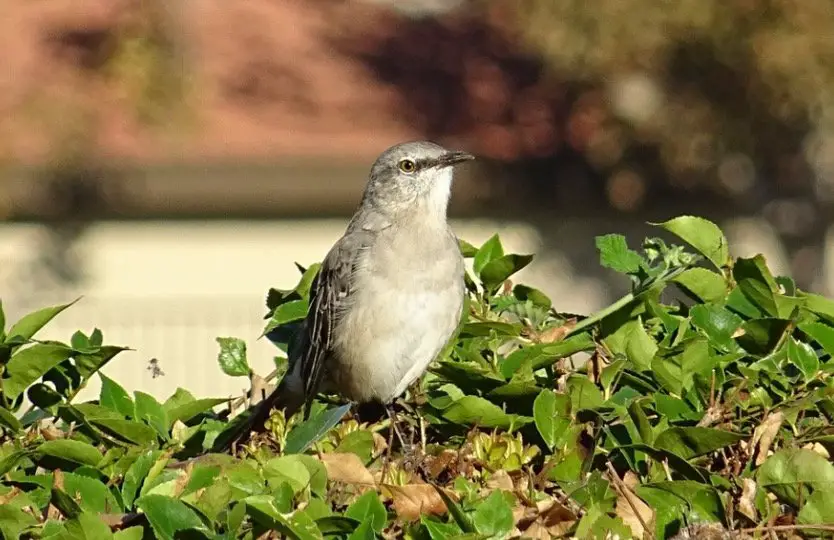
What do Northern Mockingbirds eat?
Northern Mockingbirds eat different types of food in different seasons, mainly insects in summer. They love to have insects but in fall and winter shift to fruits. Beetles, earthworms, moths, butterflies, ants, bees, wasps, grasshoppers, and sometimes small lizards are included in their animal diet.
They ingest a wide variety of berries from ornamental bushes, as well as fruits from multiflora rose. They also drink sap from the cuts on recently pruned trees.
Where do Northern Mockingbirds nest?
Shrubs and trees which are particularly 3-10 feet off the ground or sometimes as high as 60 feet are chosen for nesting. The nesting site is selected by the males and he start building several nests.
The female chooses one of them to finish and lay eggs in. When females start laying in a second nest, the male still cares for fledglings from the previous one. Northern Mockingbirds seldom use their previous nests for nesting again.
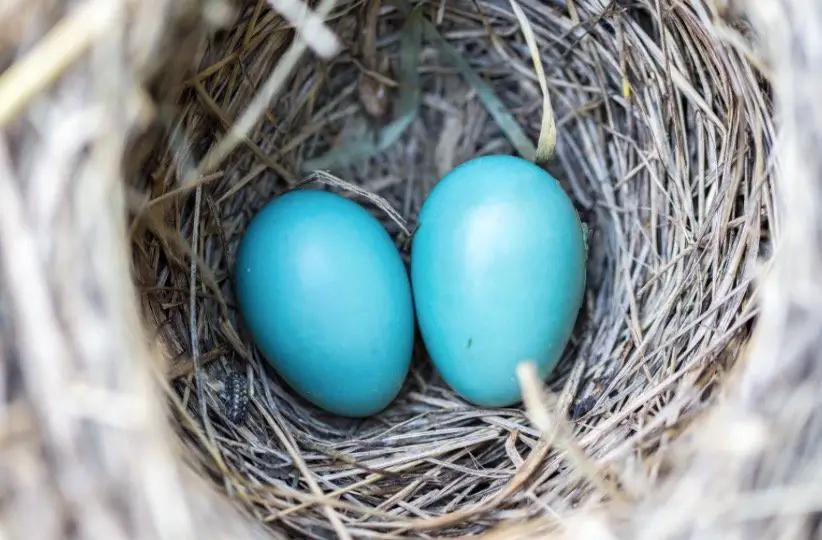
How do Northern Mockingbirds make nest?
Mockingbirds make a nest from dead twigs. They give a shape of an open cup then line the cup with grasses, rootlets, leaves, and trash, sometimes including bits of plastic, aluminum foil, and shredded cigarette filters. The male builds the twig foundation while the female makes most of the lining.
Northern Mockingbirds Nesting Facts!
| Clutch Size | 2-6 eggs |
| Number of Broods | 2 to 3 broods |
| Egg Length | 0.8-1.1 in (2-2.9 cm) |
| Egg Width | 0.6-0.8 in (1.6-2 cm) |
| Incubation Period | 12-13 days |
| Nestling Period | 12-13 days |
| Egg Description | Pale blue or greenish-white blemished with red or brown |
| Condition at Hatching | Naked, blind, with a light grey down |
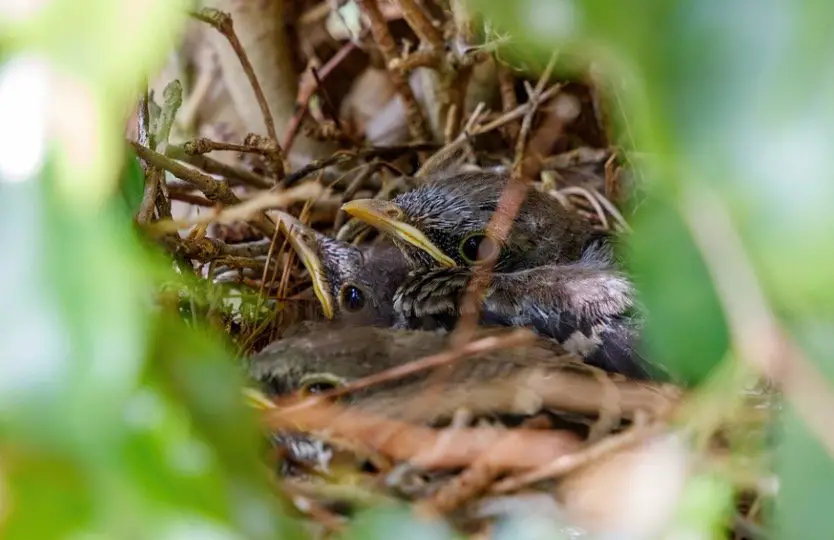
Northern Mockingbirds Description
Northern Mockingbirds may move around alone or in pairs throughout the year. They are easily visible while sitting and singing on atop shrubs, trees, utility lines, fences, and poles. When on the ground they walk, run, and hop along the ground, with their tail cocked upwards.
They grab prey on the ground or it seems that they are snatching insects just over the grass. Mockingbirds sometimes fly up and float to grab at hanging fruit. The Northern Mockingbird is aggressive and this behavior remains throughout the year.
Females typically oppose other female mockingbirds, while males provoke male intruders. Males fly toward each other in disputing territory places, land near the boundary, and face off, silently hop from one side to another.
Eventually, one bird flights and the other chases it through short ways. If neither bird retreats, they may fly at each other, grappling with wings and claws and pecking at each other. Mockingbirds are also territorial around other bird species like dogs and cats.
The flight style of mockingbirds may vary but typically it is in a leisure way, with showy wingbeats. Sometimes Northern Mockingbirds simply dribble quickly from a perch with folding wings.
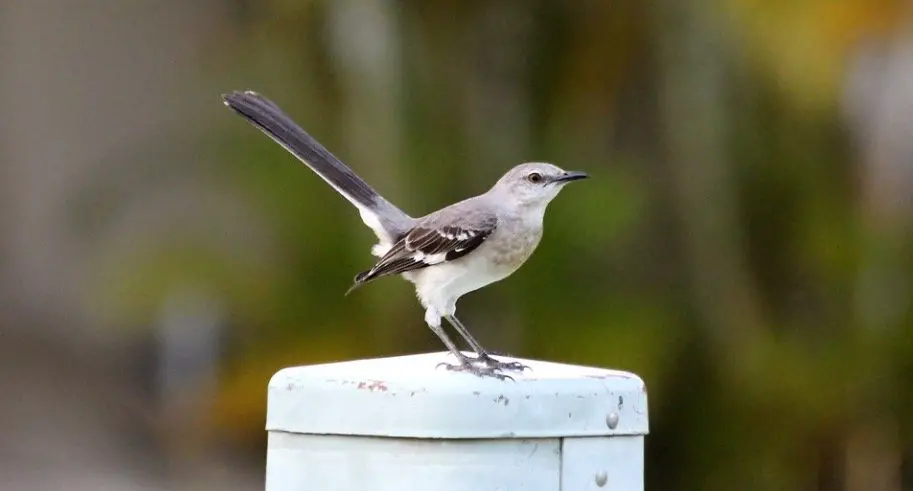
Facts about Northern Mockingbirds!
Mockingbirds get their name from their ability to imitate other birds’ songs. Mockingbirds may imitate the sounds of other birds. These gifted beings can also make music.
Mockingbirds often know around 200 tunes, some from other birds and others that are unique creations. They don’t only mimic other birds’ songs. They can recognize human music, including piano, as well as other animals, such as dogs, and urban sounds, such as gates and sirens.
The birds will notice these objects and experiment with them, generally repeating the sound two or three times fast to produce an unusual tune. So much for the old adage that bird brains are stupid, since these birds are as creative as Mozart or Bach.
While most people associate birds with morning song, the mockingbird follows a schedule similar to that of an Austin artist playing on Sixth Street.
Overnight, the mockingbird sings. Its favourite nightly performances take place in the springtime under the moonlight. Mockingbirds do not repeat the same tune again and over. They put up a medley.
The bird could sing its full repertoire in a single day, resulting in 200 individual songs. If you can’t see the bird performing for you, you could think it’s many other avian species. Instead, one bird performs throughout the day.
This bird performs a medley that is so expertly blended that it sounds like a Spotify playlist with the crossfade on. Because each bird creates its unique mix, no two Northern mockingbirds sing the identical songs.
Mated birds perform less often because these mockingbirds utilize their chirping to attract mates. A bird that hasn’t “married” yet sings more frequently in order to attract possible mates.
Mockingbirds “date,” thus it’s plural. The mockingbird, on the other hand, marries for life once they find their partner.
These monogamous pairs reproduce in a nest made of grass, twigs, leaves, and sticks. Their offspring grow up and follow in their footsteps.
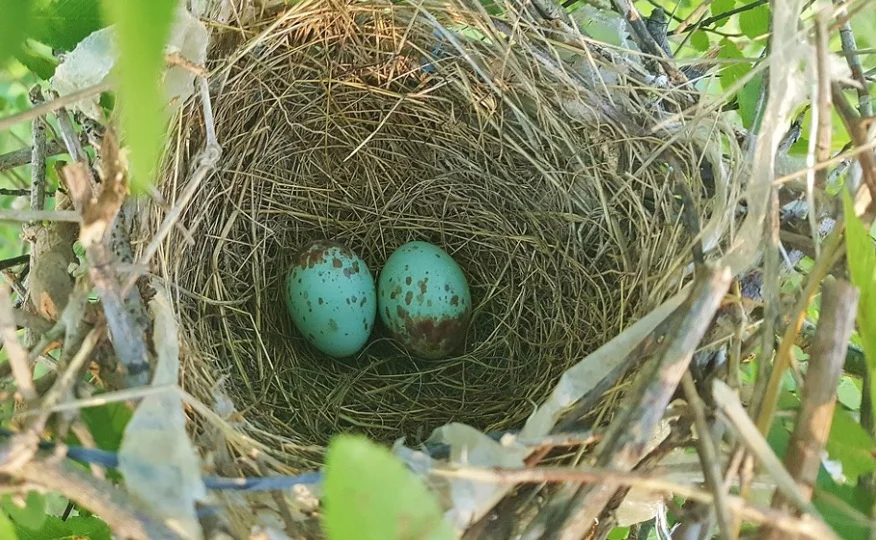
Do Northern Mockingbirds form communities?
Mockingbirds are very territorial and protective of their young. You should not approach their nests, nor should your pets. They will swoop down to attack or scare away any approaching predator.
These bold birds will fight dogs, cats, and dogs, as well as any predator that comes too close to their territory or nest. You should only admire them from a distance. Mockingbirds remember you and can identify certain persons and animals.
If you irritate the bird, you will have a lifetime adversary. Every time you approach it, it will dive-bomb you, indicating that it feels frightened, as described in the Proceedings of the National Academy of Sciences.
You may reside in Texas yet see the Northern Mockingbird while on holiday in Mexico or Canada. They often like to live in a marine location, since birds love the seashore as well.
Those birds, particularly those from Canada’s provinces, do migrate south during the winter. These birds may also be found in the United Kingdom, Hawaii, and southern Alaska.
They like any open place with little vegetation. Open spaces are not synonymous with rural places. These birds, too, live in cities. They may be seen in parks and gardens. They despise the forest and avoid it at all costs.
While birds in colder climates such as Alaska and Canada migrate south for the winter, those in Texas remain put. The Northern mockingbird prefers to spend the full year in the same environment.
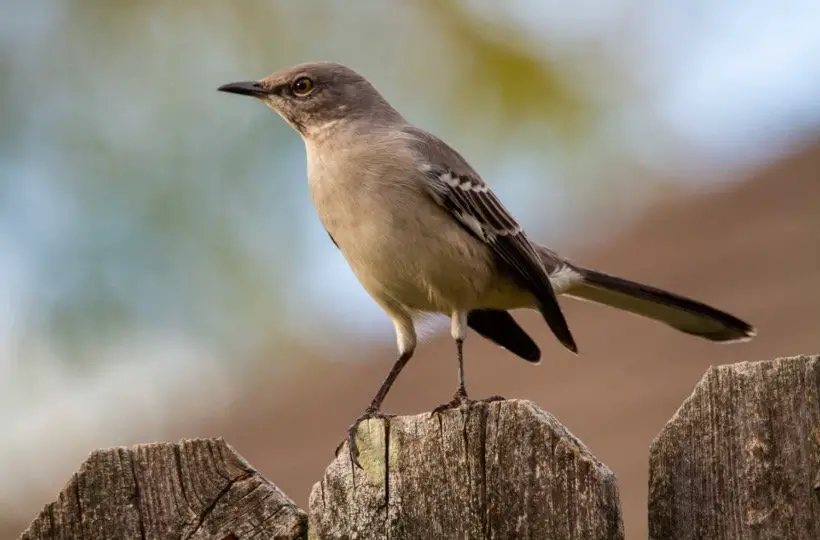
Northern Mockingbirds Conservation
According to the North American Breeding Bird Survey, the population of Northern Mockingbird is declining. It has decreased about 21% percent from 1966 to 2015. Partners in Flight estimated its global breeding population of 32 million.
Out of that 83% is in the U.S., 16% in Mexico, and 6% in Canada. The Continental Concern Score rates it 8 out of 20 and it is not on the 2016 State of North America’s Birds Report.
However, instead of declining numbers, Northern Mockingbirds are widespread and have bounced back from lows in the nineteenth century because at that time many birds were trapped or caught from nests and sold as cage birds.
Northern Mockingbirds diet
This varies according to place and season of the year, but they generally like the same kind of foods. Mockingbirds eat mostly fruit and seeds, with berries and tiny insects rounding out their diet. Mockingbirds are carnivores. Moths, earthworms, and beetles are among its favourite foods.
Northern Mockingbirds backyard tips
Northern Mockingbirds are common visitors in backyards, but they don’t like to use feeders. Northern mocking birds can be encouraged to visit the yard by keeping an open lawn with several numbers of fruiting trees or bushes like mulberries, hawthorns, and blackberry brambles.
